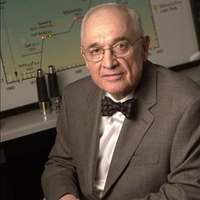Get Involved
- Optica on Ukraine
- Awards & Honors
- Diversity, Equity & Inclu...
- Early Career Professional...
- Education Outreach
- Global Policy & Affairs
- Local Section
- Virtual Engagement
- Students
-
Technical Groups
- Bio-Medical Optics
- Fabrication, Design and Instrumentation
- Information Acquisition, Processing and Display
- Optical Interaction Science
- Photonics and Opto-Electronics
- Vision and Color
- Technical Group Leadership Volunteers
- Technical Group Webinars
- Technical Group Events
- Technical Group Search
- Technical Group Prizes
- Volunteer
- Optica on Ukraine
- Awards & Honors
- Diversity, Equity & Inclusion
- Early Career Professionals
- Education Outreach
- Global Policy & Affairs
- Local Section
- Virtual Engagement
- Students
-
Technical Groups
- Bio-Medical Optics
- Fabrication, Design and Instrumentation
- Information Acquisition, Processing and Display
- Optical Interaction Science
- Photonics and Opto-Electronics
- Vision and Color
- Technical Group Leadership Volunteers
- Technical Group Webinars
- Technical Group Events
- Technical Group Search
- Technical Group Prizes
- Volunteer
Nick Holonyak, Jr. Award
The award was established in 1997 to honor Nick Holonyak Jr.'s distinguished contributions to the field of optics through development of semiconductor based light emitting diodes and semiconductor lasers.
Society Connection
Nick Holonyak Jr. is a long-time and highly decorated member. A Fellow and Honorary Member, he has also been awarded the Frederic Ives Medal/Jarus W. Quinn Prize and Charles Hard Townes Medal.
Key Funders
SDL Ventures, Donald and Carol Scifres
About Nick Holonyak Jr.
 Holonyak received his bachelor's (1950), master's (1951), and doctoral (1954) degrees in electrical engineering from the University of Illinois at Urbana-Champaign. He is internationally recognized for major contributions to elemental and compound semiconductors, including semiconductor lasers and incoherent light emitters.
Holonyak received his bachelor's (1950), master's (1951), and doctoral (1954) degrees in electrical engineering from the University of Illinois at Urbana-Champaign. He is internationally recognized for major contributions to elemental and compound semiconductors, including semiconductor lasers and incoherent light emitters.
He worked for Bell Telephone Labs on silicon-based electronic devices and was a scientist at General Electric Company's Advanced Semiconductor Laboratory form 1957 – 1963 where he invented the first practical light-emitting diode (LED), alloy semiconductor lasers, and the technology used in household light dimmers.
In 1963, he became a professor at the University of Illinois, from which he retired fifty years later in 2013 as the John Bardeen Endowed Chair in Electrical and Computer Engineering and Physics.
Holonyak was the first to make electron devices using III-V semiconductor alloys and to demonstrate quantum-well heterostructure lasers, now used in compact disc players and fiber-optic cables. He was also the first to demonstrate stable native oxides on aluminum-bearing III-V compounds, now the basis for vertical-cavity surface-emitting lasers. Earlier, he and his students introduced impurity-induced disordering (intermixing) of quantum-well heterostructures.
His work has resulted in more than 500 journal papers and 34 patents. He is a member of the National Academy of Engineering and the National Academy of Sciences, and is one of only 13 Americans to have won both the National Medal of Science (1990) and the National Medal of Technology (2002). In 2004, he won the Lemelson-MIT Prize-the world's largest single cash prize for invention.
His other awards include Laureate of the Lincoln Academy of Illinois, 2005; Global Energy Prize from Russia, 2003; IEEE Medal of Honor, 2003; the society’s highest award, the Frederic Ives Medal/Jarus W. Quinn Prize, 2001; Japan Prize, 1995; National Academy of Sciences' Award for the Industrial Application of Science, 1993; and the Charles Hard Townes Medal, 1992. He is a Fellow and Honorary Member of the society, a Fellow of the American Academy of Arts and Sciences, the American Physical Society and the IEEE, and he is a foreign member of the Russian Academy of Sciences. Eight of his 60 doctoral students are members of the National Academy of Engineering.
